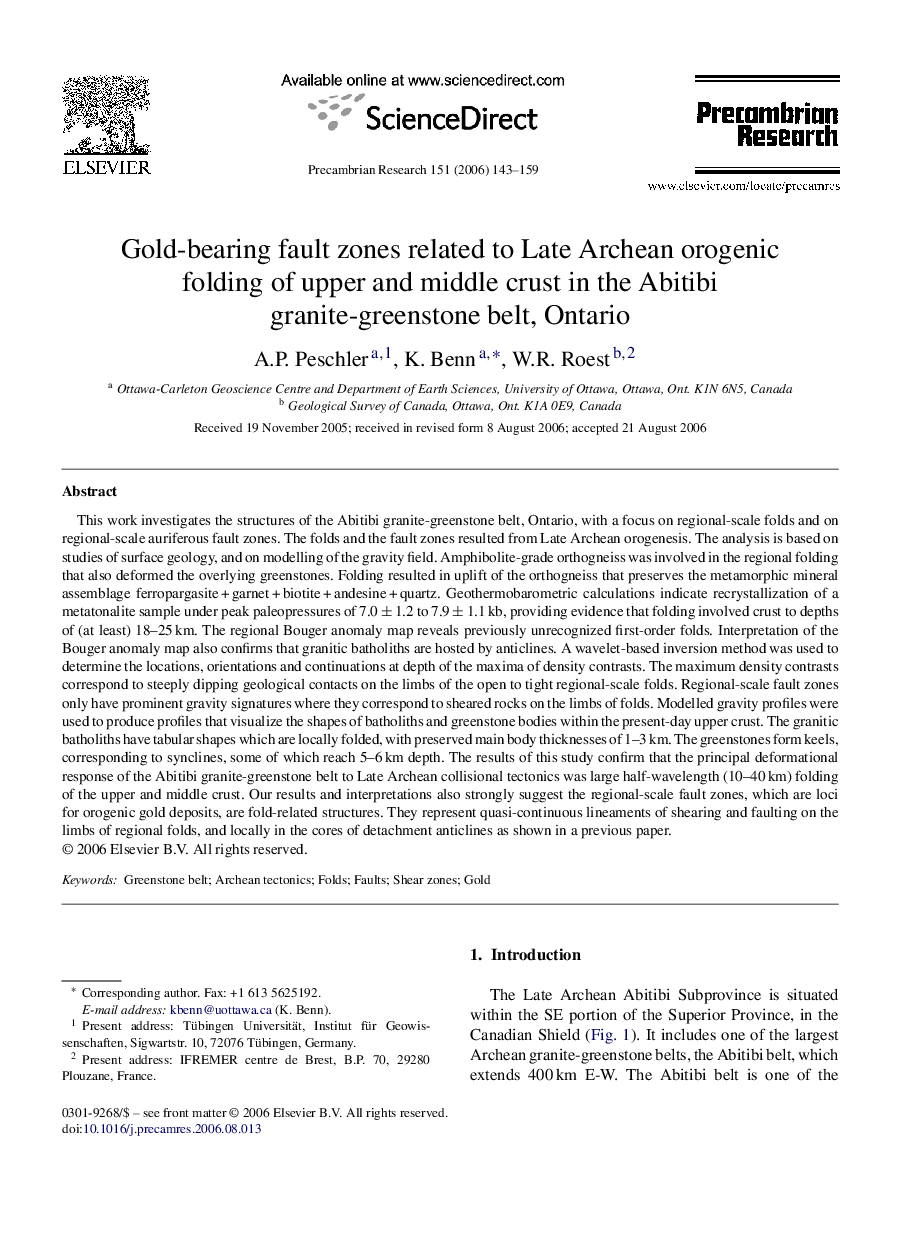| Article ID | Journal | Published Year | Pages | File Type |
|---|---|---|---|---|
| 4724716 | Precambrian Research | 2006 | 17 Pages |
This work investigates the structures of the Abitibi granite-greenstone belt, Ontario, with a focus on regional-scale folds and on regional-scale auriferous fault zones. The folds and the fault zones resulted from Late Archean orogenesis. The analysis is based on studies of surface geology, and on modelling of the gravity field. Amphibolite-grade orthogneiss was involved in the regional folding that also deformed the overlying greenstones. Folding resulted in uplift of the orthogneiss that preserves the metamorphic mineral assemblage ferropargasite + garnet + biotite + andesine + quartz. Geothermobarometric calculations indicate recrystallization of a metatonalite sample under peak paleopressures of 7.0 ± 1.2 to 7.9 ± 1.1 kb, providing evidence that folding involved crust to depths of (at least) 18–25 km. The regional Bouger anomaly map reveals previously unrecognized first-order folds. Interpretation of the Bouger anomaly map also confirms that granitic batholiths are hosted by anticlines. A wavelet-based inversion method was used to determine the locations, orientations and continuations at depth of the maxima of density contrasts. The maximum density contrasts correspond to steeply dipping geological contacts on the limbs of the open to tight regional-scale folds. Regional-scale fault zones only have prominent gravity signatures where they correspond to sheared rocks on the limbs of folds. Modelled gravity profiles were used to produce profiles that visualize the shapes of batholiths and greenstone bodies within the present-day upper crust. The granitic batholiths have tabular shapes which are locally folded, with preserved main body thicknesses of 1–3 km. The greenstones form keels, corresponding to synclines, some of which reach 5–6 km depth. The results of this study confirm that the principal deformational response of the Abitibi granite-greenstone belt to Late Archean collisional tectonics was large half-wavelength (10–40 km) folding of the upper and middle crust. Our results and interpretations also strongly suggest the regional-scale fault zones, which are loci for orogenic gold deposits, are fold-related structures. They represent quasi-continuous lineaments of shearing and faulting on the limbs of regional folds, and locally in the cores of detachment anticlines as shown in a previous paper.
